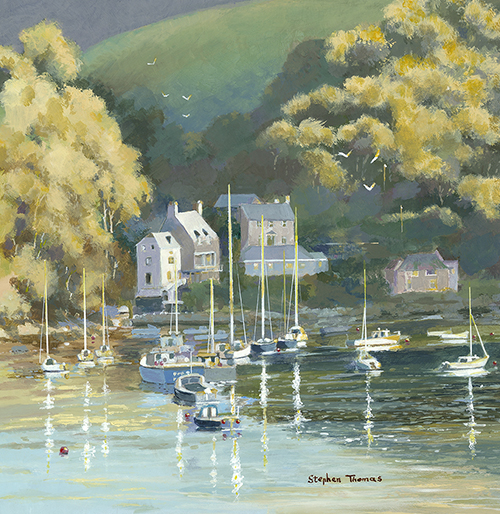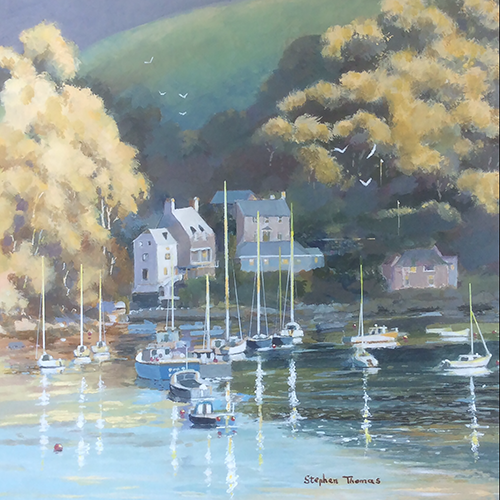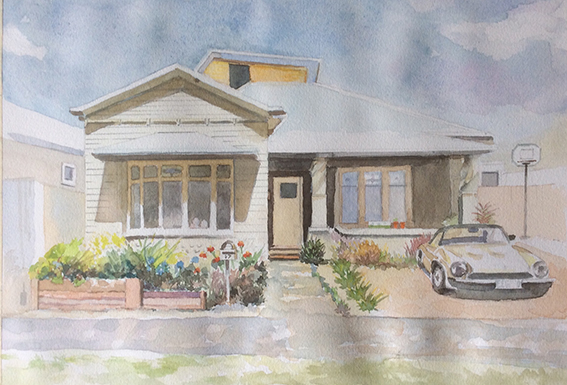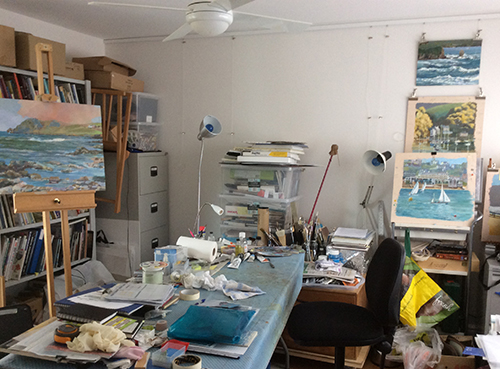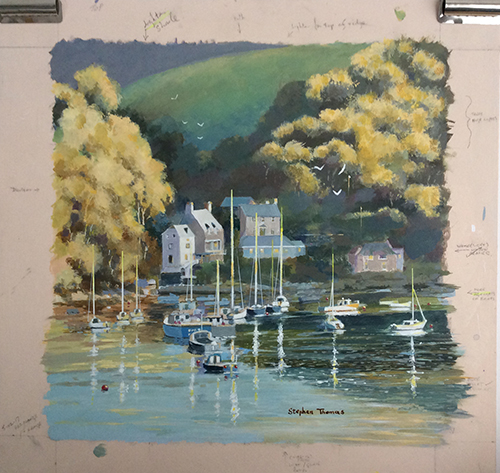Postcard from MV Ventura: Sketching at sea
Whenever we go travelling, I pack my watercolour kit and various sketchbooks of various sizes and make time for sketching.
Our ritual, as soon as we arrive at a new place, somewhere we will be staying long enough for Anne to write and me to paint, is to set up the space to suit us both. Our cabin aboard MV Ventura was perfect for our needs. And what a view!
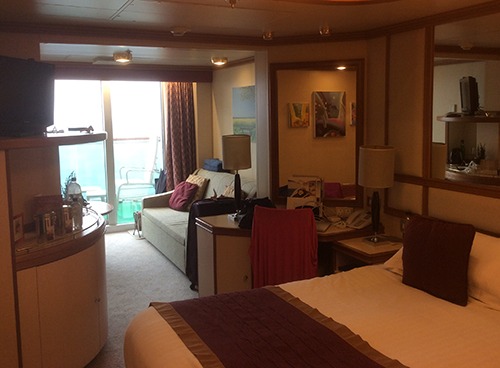
Anne bagged the ‘dressing table’ as her office space, and I took over the ‘lounge’ area. Some shelving beneath the TV held all my equipment and I used the small coffee table for my palette and to rest my sketchbook.
We were aboard MV Ventura for fourteen days and seven of those were at sea. This gave me plenty of time for sketching.
Water, water, all around …
For the first two days, crossing from Southampton to Lisbon. all we saw from our balcony was the sea. And ships. And even more ships and drilling rigs whenever we went into port. With my marine insurance background, I found this fascinating and took many photos. So much resource material, so much inspiration for my sketching, but never enough hours to paint everything!

However, I did sketch a few cruise ships and captured the landscape when we were in port.
Sketching Queen Victoria
One of Anne’s friends cruises regularly. We met her and her husband for lunch in Madeira a few years ago. We were staying in Funchal over Christmas and New Year; they were due to arrive on New Year’s Eve, in time to see the fireworks that night. This time, they were aboard Queen Victoria and – because our itineraries had us both in Madeira on 31 December, we planned to meet up at the same restaurant for a catch-up. Imagine our surprise to wake up the day before, to see their ship just across from ours.
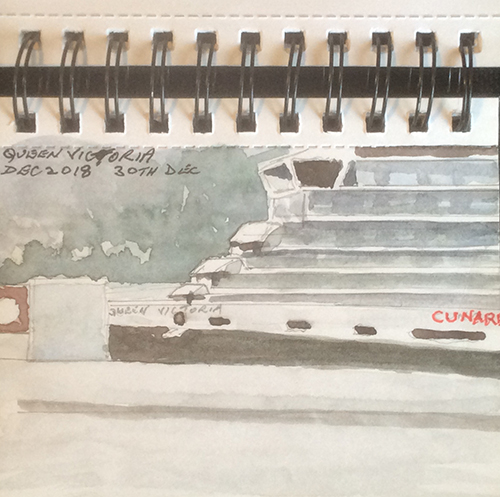
As it turned out, we should have made the effort to meet that day. Once we got to Madeira, they were moored off and the sea was too rough for them to be allowed ashore on the tenders.
This sketch is of Queen Victoria sailing off into the sunset.
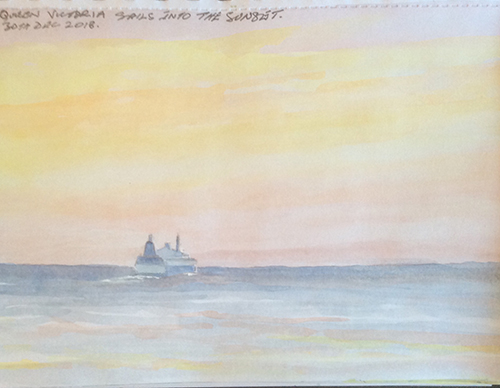
Sketching in Tenerife
We’ve visited Tenerife before and we were not inclined to go ashore that day. The sky above the mountains was black, and we’d not been attracted by the various tours on offer. Instead, we enjoyed relative peace and quiet aboard ship. Anne did lots of writing and when I wasn’t taking photos, I was sketching . Bliss!
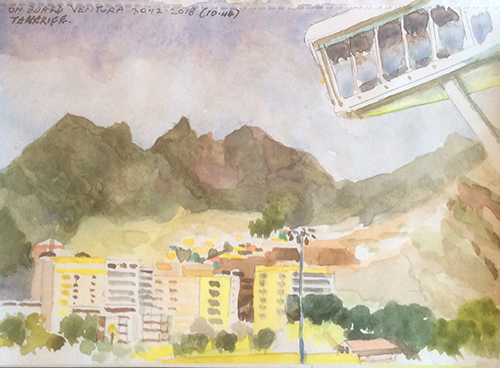
Sketching in Madeira
We’ve also visited Madeira many times but never aboard a cruise ship. The day we arrived (31 December), it was a full house.
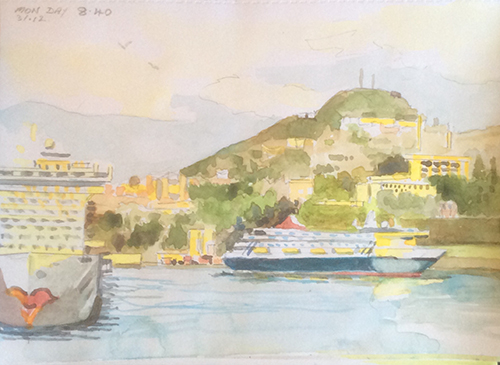
We walked ashore in the morning and returned to the ship in time to avoid a downpour. As you will have seen from a previous post, the rain abated, almost, and the New Year’s Eve fireworks were spectacular.
This post is one of my POSTCARD series, sharing all things ART with you when I go travelling. My previous postcard focused on edible art.
Next week’s blog shares more of the art we discovered ashore. If cruising appeals to you, visit the P&O website.


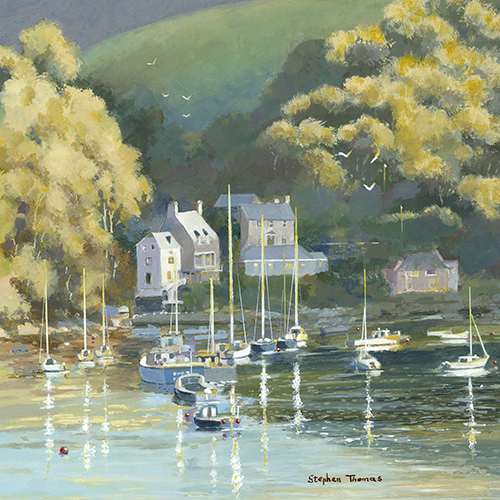
 Noss Mayo Sunset is one of a crop of six new paintings destined for the Salcombe Art Club Summer Exhibition.
Noss Mayo Sunset is one of a crop of six new paintings destined for the Salcombe Art Club Summer Exhibition.